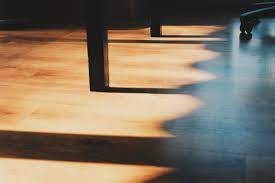Choosing the type of floor you want is, first of all, a matter of selecting the type of floor, the type of wood and the protective finish of the floor according to aesthetic and technical criteria. Solid or laminate? Oak or teak? Raw, varnished, oiled or waxed?
Summary
– Which type of parquet to choose: solid or engineered?
– Which wood species to choose?
– Which protective finish to choose from?
Which type of parquet to choose: solid or glued?
You want to install a parquet, but you are still hesitating: solid or engineered? Depending on your budget, the ease of installation, the material’s resistance, the maintenance and your taste, you will choose one or the other material.
To help you choose and compare, we present the characteristics, advantages and disadvantages of solid wood and glued wood flooring.
Solid parquet
Traditional parquet par excellence, solid parquet is composed of 100% of the same and unique wood species. Warm, authentic, resistant and durable over time, solid wood flooring is a profitable investment.
Engineered flooring
Composed of three layers of wood glued together, engineered flooring adapts to all configurations. Offering a wide variety of wood species, it is similar to solid wood flooring, which is less expensive but less durable.
Which wood species to choose?

There is a wide variety of wood species for flooring, each with its characteristics in terms of hardness, resistance to humidity and colour.
If the choice of a wood species depends above all on your aesthetic tastes and the budget you wish to devote to your project, it is also essential to choose a species adapted to the use of your room. To make it easier to find your way around, you should know that wood species are divided into four hardness classifications, from class A (softwood) to class D (very hardwood).
Important: the FSC and PEFC quality labels aim to ensure the traceability of European and exotic woods and to guarantee sustainable and responsible forest management.
Classic species
Classic (or indigenous) species are all wood species from local forests in France and Europe. Oak, chestnut and beech are the most common wood species, suitable for all types of structures.
Good to know: oak is the most used for the manufacture of parquet.
Exotic species
Exotic species come from the rainforests of Africa, Asia, South America or North America. Generally more expensive than traditional species, they compete more and more thanks to their resistance, their hardness. Their yellow, red or brown colour offers a refined and warm character to your room. Also, they are ideally suited to wet rooms such as the bathroom.
Which protective finish to choose from?
All wood flooring, solid or engineered, requires a surface treatment to protect it from daily wear and tear unless you choose a raw, untreated floor.
The application of this protective finish after installation is an essential step that determines the aesthetics and maintenance of your flooring. The three main protective finishes are varnish (or sealant), oil and wax.
Depending on the type of wood, its origin, hardness, ease of maintenance and your budget, you choose one finish over another.
Read more:
Which Headboard Style to Choose for Your Bed;
How to Make Your Own Bed Headboard (Part 1);;
3 Easy Steps to Paint PVC;
Quartz Countertops: The Key Benefits!;
How Do You Paint a Staircase;
4 Perfect Eco-Friendly Habits to Adopt at Home in 2022;
How to Decorate Your Home in African Style;
Unique Custom Homes | Raising the Walls of a House.
Hope you have been pleased with this post. Remember to comment below.